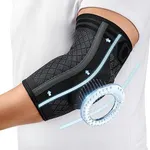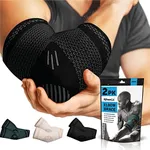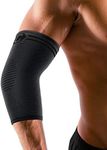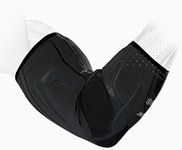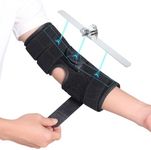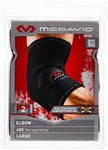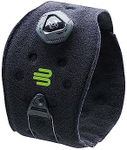Buying Guide for the Best Tendonitis Elbow Braces
Choosing the right elbow brace for tendonitis can make a big difference in your comfort and recovery. The main goal of an elbow brace is to provide support, reduce strain on the affected tendons, and help manage pain during daily activities or sports. When shopping for an elbow brace, it's important to consider how and when you'll use it, your level of activity, and how much support or flexibility you need. Understanding the key features will help you find a brace that fits well, feels comfortable, and supports your healing process.Type of BraceThe type of elbow brace refers to its design and intended use. Common types include strap-style braces (also called counterforce braces), sleeve-style braces, and braces with adjustable straps. Strap-style braces apply targeted pressure just below the elbow, which can help relieve pain from conditions like tennis or golfer’s elbow. Sleeve-style braces provide more general compression and warmth to the whole joint. If you need support during sports or repetitive tasks, a strap-style brace may be best, while a sleeve is good for all-day wear or mild symptoms. Consider your daily activities and the severity of your tendonitis to choose the right type.
Level of SupportSupport level describes how much stability and restriction the brace provides. Light support braces are flexible and allow for a full range of motion, making them suitable for mild symptoms or prevention. Moderate support braces offer more compression and some restriction, which can help during flare-ups or moderate pain. High support braces are more rigid and limit movement, which is useful for severe cases or post-injury recovery. Think about how much movement you need for your activities and how much pain or instability you experience to decide on the right support level.
Material and BreathabilityThe material of the brace affects comfort, breathability, and durability. Common materials include neoprene, which is stretchy and provides warmth, and fabric blends that are lighter and more breathable. If you plan to wear the brace for long periods or during exercise, look for breathable, moisture-wicking materials to prevent sweating and irritation. For short-term use or extra warmth, thicker materials like neoprene may be suitable. Your comfort and skin sensitivity should guide your choice here.
Adjustability and FitAdjustability refers to how well you can customize the fit of the brace, usually with Velcro straps or elastic bands. A good fit is important for both comfort and effectiveness. Braces that are too tight can restrict blood flow, while those that are too loose may not provide enough support. Adjustable braces allow you to fine-tune the pressure and fit, which is especially helpful if your arm size changes due to swelling. If you want a simple, slip-on option, sleeves are less adjustable but can be more convenient. Consider your preference for ease of use and how much customization you need.
Ease of CleaningEase of cleaning is about how simple it is to keep the brace hygienic and odor-free. Some braces are machine washable, while others require hand washing. If you plan to wear the brace often or during sweaty activities, look for one that is easy to clean and dries quickly. This will help maintain comfort and prevent skin irritation. Your lifestyle and how often you expect to use the brace should influence your choice here.

